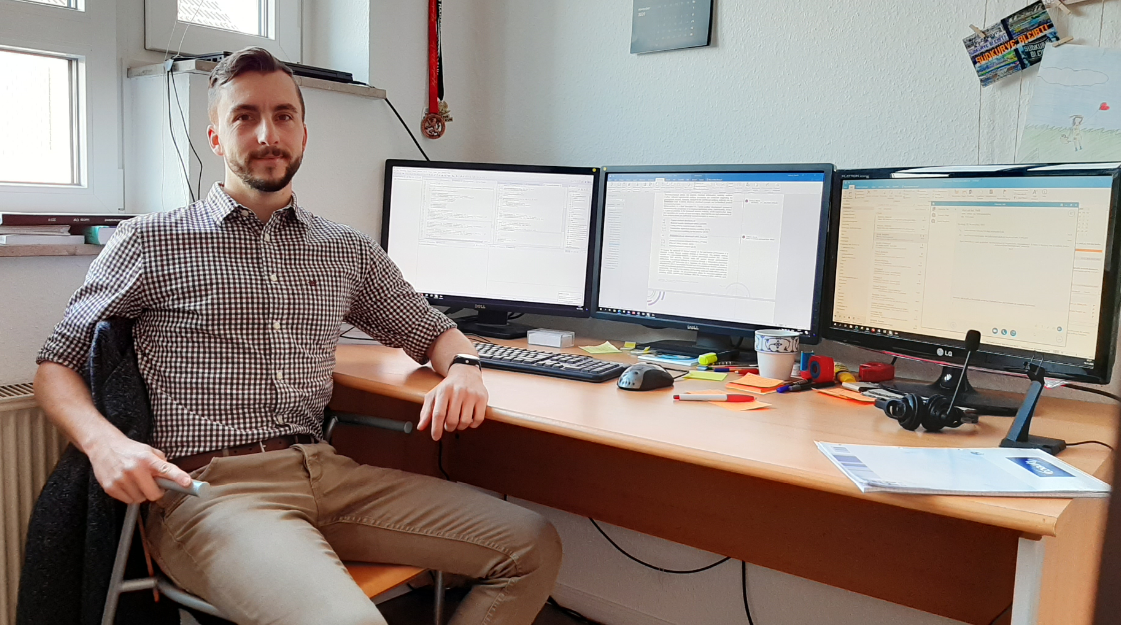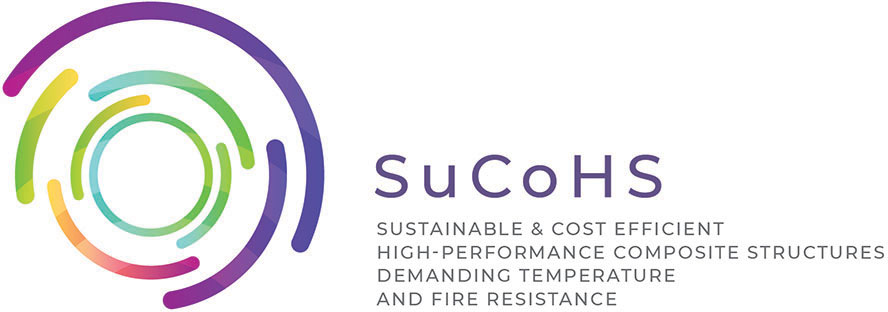Find out how the people involved in SuCoHS have been working to achieve the objectives of the project!
Interview with Martin Liebisch, Research Engineer at DLR, German Aerospace Center

Question 1 (Q1): DLR is the leader of the SuCoHS work package called “New Analysis Methods, Allowables and Structural Concepts”. Can you describe your involvement in the project?
Answer 1 (A1): As the name tells, this work package aims to develop analysis methods that can be exploited to derive improved structural concepts. It focuses mainly on thermal and mechanical load conditions. The developments include material models, different analysis methods and assessment strategies as well as procedures for probabilistic assessment. An important challenge is to coordinate the different developments for a most beneficial use of the different methods. Furthermore, there are strong interactions with many other activities of the project, for instance with sensor systems and structural testing. Within SuCoHS, we have the opportunity of receiving measurement data from different sensor systems to update simulation models and to validate simulation results. However, the overall goal is to develop analysis methods and strategies that support development of future structures.
Q2: For a long time, the experimental approach was the main method for determination of material properties. However, with the development of the computing sciences, new material models have been developed. How is this process implemented in SuCoHS?
A2: The new material models developed for structural analyses are a specific key of the project. The developed models are dependent on material state, temperature and time. By introducing such dependencies, more detailed analyses can be conducted to provide higher confidence in simulation results and to enable more advanced designs with less conservatism. However, the material models require a decent amount of experimental characterisation. The combination of experimental testing on different scales is performed for determining required model parameters with reduced effort, for instance combining thermophysical analysis and static testing. Different possibilities were investigated in SuCoHS in collaboration with the partners involved in the material development.
Q4: Are there differences or challenges in developing analysis methods for materials with high-temperature and fire applications?
A4: The most important challenge comes with the presence of temperature as it adds an additional dimension to the problem that has to be solved and therefore introduces further dependencies. With increasing temperature, materials degrade or even change their state which affects the structural behaviour. There are a lot of challenges that have to be dealt with, as for instance the interactions of thermal strains with boundary conditions or the determination of buckling and material failure in dependence on temperature. Also, it is a complex task to provide reliable models describing material decomposition under fire conditions Finally, a huge challenge for us is to evaluate and to quantify the reliability of the developed simulation methods and material models which has to be validated for their future use within industrial environments. For this reason, probabilistic methods are used and shall be further exploited in the future to reduce unnecessary conservatism while ensuring required structural robustness.
Q5: How will the probabilistic methods investigated in SuCoHs allow for efficient manufacturing and operation of composite materials?
A5: Manufacturing defects are investigated in terms of curing analysis and defect analysis. The curing analysis provides effective material properties, resulting distortions and residual stresses depending on the manufacturing process parameters. The defect analysis determines the effect of preforming defects as for instance gaps, overlaps or undulations on the structural performance. The probabilistic methods are able to assess the effects of defects for a wide parameter range. Based on the resulting probability distribution the robustness of a manufacturing process can be assessed in the early design stage and required tolerances can be determined via inverse approaches. By this, the aim is to relax current tolerance definitions as they are mainly based on worst case assumptions. Based on reliability analysis, further conservatism within sizing can be reduced with still providing a robust structural behaviour. Such usage of probabilistic methods leads to further weight reduction and supports structural design procedure.
Q6: You have recently launched the discussions with the project partners around the “building block approach”. Can you explain what this approach consists of? How will it be applied in SuCoHS?
A6: The simulation methods are developed to fulfill various requirements in terms of accuracy, reliability, efficiency and industrial applicability. Moreover, requirements from different disciplines are to be considered throughout the development process of a part from preliminary design via detailed design and manufacturing design up to final verification. Therefore, particular verification steps have been discussed and realized on different scales from coupon level to structural level. The possibility to connect several simulation methods enables to derive additional knowledge throughout the structural development process and thus serves for improved structural design.
DISCLAIMER
The information, statements and opinions in the above interview are personal views of the individuals involved in the SuCoHS project and do not necessarily reflect the views of the SuCoHS consortium as a whole, nor of the European Commission. None of them shall be liable for any use that may be made of the information contained herein.
